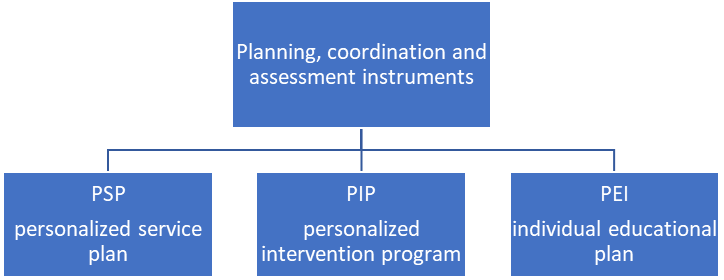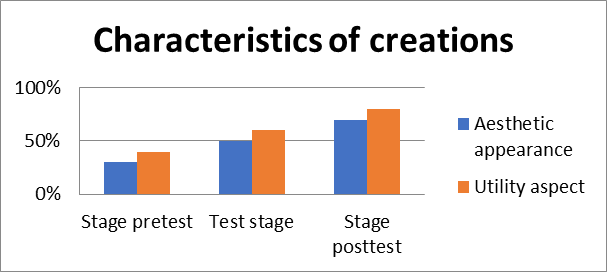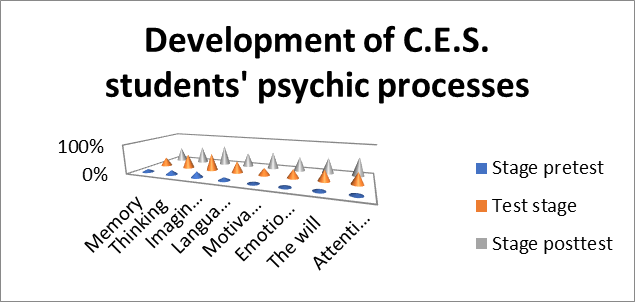Abstract
This article highlights the significant contribution of the visual arts discipline and practical skills to the education of pupils with special educational needs (C.E.S) in primary school. The aim of the research is to highlight the utilitarian and aesthetic character of the products of the C.E.S students' activity carried out in the visual arts and practical skills classes. The objectives of the research are aimed at teachers and students with C.E.S. The experiment is the main method used in research. In the lessons of visual arts and practical skills in the making of objects, as well as in their finishing, all psychic processes develop: the memory, the thinking, the imagination, the language, the motivation, the affectivity, the will and the attention of the students as well as the spirit of initiative. The fact that students with C.E.S. practice visual lessons and practical skills come in contact with the richness of shapes and colors of the objects they make makes them not just simple passive admirers, but have a creative attitude towards beauty, which contributes to the education of aesthetic taste, the taste for beauty. The fact that students with C.E.S. practice visual lessons and practical skills. Come in contact with the usefulness of the products they make makes them improve their skills, motor skills, strength and skill.
Keywords: EducationCES pupils
Introduction
The discipline of visual arts and practical skills makes a remarkable contribution to the education of pupils with special educational needs (C.E.S) from primary school. The novelty of the discipline is that it is being studied in an integrated way by stimulating the activity of knowing the pupils.
Education
Education is presented as “A set of planned, organized, coordinated, regulated actions, oriented towards goals and concrete objectives derived from the formulated goal”, as Joita (2001) remarks.
C.E.S. pupils
C.E.S is a phrase that emerged from the need to replace the educational abnormality or school inconvenience. The concept was launched in the UK in 1978, was taken over by Spain, Portugal, and by UNESCO in 1955 and by Romania. According The Parliament of Romania (2011) completed and updated the Romanian state supports the pre-school, pupils and students with special educational requirements (C.E.S.).
“The educational institution is also obliged to educate the children with special educational needs and to ensure the physical access of these children to the school environment” as Solovei, Malcoci, and Filip, (2013).
In most European countries, identifying and evaluating children with C.E.S. is largely the responsibility of the (ordinary and/or special) schools and the education authorities. In Romania the responsibility is double and belongs to:
Child Protection Commissions;
In-house internal evaluation commissions in schools.
The psycho-pedagogical plan C.E.S. (special educational needs) “designates the educational needs that are complementary to the general objectives of school education, needs that require a schooling tailored to individual peculiarities and/or characteristic of a disability or learning disorder, as well as a specific intervention through rehabilitation, proper recovery” as Vrasmas, Nicolae, Oprea, & Vrasmas, (2005) (Table
The planning, coordination and evaluation tools make the student with C.E.S. to have a fullest vision of his needs; these tools ensure continuity, complementarity, and service quality in response to its various requirements (Figure

Planning, coordination and evaluation tools are used to establish the necessary interventions for each student.
Problem Statement
The research problem is the contribution of visual arts and practical skills in the education of students with C.E.S.
Visual Art Lessons and Practical Skills contribute significantly to C.E.S. student education leading to the creation of functional creations of a utilitarian character.
The lessons of visual arts and practical skills must be analyzed from two points of view:
As a means of accumulation, consolidation and deepening of knowledge;
As an education of moral attitude towards work.
The actual achievement of a creation (product of activity) presupposes the development of C.E.S. students' capacities.
Lessons of visual arts and practical skills as a means of accumulation, consolidation and deepening of knowledge
Art lessons are a way of applying in practice the knowledge acquired in other subjects of education, consolidation and deepening of them. We have found that many mathematical knowledge has been clearer in making simple, elementary measurements and calculations that have been required to produce seed boxes or tokens. The boxes manufactured have different sizes, colors and geometric shapes. I have noticed the diversity of pupil creations (boxes) that have become functional, so they are useful for preserving seeds or tokens. On this occasion, we noticed the interdisciplinary character of the natural sciences, the seeds belonging to the different plant species.
Lessons of visual arts and practical skills as education of moral attitude towards work
C.E.S. students' participation to practical work is a means of acquiring simple elements of the bases of conception of world and life. Teaching arts has a special educational value that contributes to educating the student's moral attitude towards work. The content of the activities carried out in the experiment was rooted in the consciousness of students with C.E.S. the idea that man cannot live without working without creating the material goods necessary for his existence. The lesson titled
Research Questions
“A child who grew up and developed in a normal environment, like all other children of his age, but could not assimilate information as others, can be considered with a learning difficulty” as noted by Bita, (2018).
Behavior of students with C.E.S. is very closely related to the achievement of the final results.
How does C.E.S. student behavior change through visual arts and practical skills?
Students' behavior changes during the course of activities specific to visual arts and practical skills. Throughout the experiment, we considered the observance of calendar planning and learning units designed by class teachers so that the theme and the number of hours set for the learning activities set for the intervention did not change. The pedagogical experiment is of a collective type, carried out in the natural context of the organization of classroom education. For the experimental classes we designed, together with primary school teachers and teachers, teaching activities characterized by the introduction of experimental variables, discovery and discovery, in the teaching-learning of visual arts and practical skills.
The didactic activities in the experimental classes were distributed for two hours with the subject of
Students' behavior changes by performing functional, aesthetic creations using various elementary materials and techniques: modelling, incision, pressing, brushing. Students are more receptive, attracted to activity and motivated by their own creative achievements that make them realize that any effort made leads to the realization of the results in a finished product (the pencil holder and the box).
What changes in the results?
After repeated exercises, the quality of the finished products obtained in the visual arts classes and practical skills is reflected in:
Appearance of the products - pupils color, paint, shade, model, use the line for contour and decorative purpose, stamp, scratch, imprint, make spontaneous shapes, bend, stick, tear, cut, cut out according to the need.
Product Resilience - Students attach and assemble components or parts of manual work products.
Depending on the product's specificity, it is used with different destinations
Purpose of the Study
The aim of the study is that Visual Arts lessons and practical skills lead to the enhancement of the utility of C.E.S. student products.
The objectives of the research are objectives related to the activity of the teachers and objectives aimed at S.E.S. students' activity.
Objectives that relate to the teaching staff
Teachers design, perform, and evaluate the entire activity of visual arts lessons and practical skills in the experiment as the organizers of learning situations.
Objectives targeting students' activity
Students in the sample of subjects must:
To create the Magic Box and the Hedgehog - pencil support using modeling, pressing, incision, brushing, joining, collage, scratching, fingerprinting, breaking, cutting, contouring techniques;
To self-evaluate their own works.
The achievable objectives change the behavior of the student with C.E.S., helping to eliminate hyperactivity, develop visual and language skills, develop orientation, eliminate affective disorders, acquire practical skills
Research Methods
The experiment is the main method we used in our research. To experience is to put students in the situation of conceiving and practicing a certain kind of operations themselves in order to provoke what is to observe, prove, study, appreciate, check, measure the effects, the results, operations that will result in new cognitive and operational acquisitions for them.
The demonstration experiment
The demonstrative experiment is prepared by the teacher for primary education before the lesson and then presented to the class in order to demonstrate, explain, confirm, clarify or verify some truths with the help of experiences and explanations that accompany them.
The application
The experiment involves two stages:
Acquiring the knowledge that has been demonstrated to them by the teacher for primary education.
Applying in practice the knowledge gained from the teacher's demonstration for primary education
Learning through experimentation stimulates the development of thinking specific to the different fields of visual arts and practical skills.
Findings
Upon completion of the research we found that students with C.E.S. express a particular interest in the activities developed within the discipline Visual Arts and Practical Skills, because it combines the useful with the pleasure within them.
Teachers' activity
Teachers designed, conducted, performed and evaluated all of the research activity.
Students’ activity
Students were able to create the Magic Box and Hedgehog Pencil Pens by using modelling, pressing, incision, brushing, joining, collage, scratching, fingerprinting, tearing, cutting, contour cutting techniques.
Students perform functional aesthetic creations using various elementary materials and techniques: modeling, incision, pressing, brushing. Students are more receptive, attracted to activity and motivated by their own creative work that leads them to realize that any effort made leads to the realization of the results in a finished product (the pencil holder and the enchanted box). Student activity products are characterized by:
Utility;
Aesthetic value.
In order to measure the utility character of the works, we compare the results from the pretest, test and posttest stages of the students in the experimental sample.
On a scale of 1 to 100, the usefulness of C.E.S. students' creations is noted in the three stages of the research. On the basis of the applied tests, the results obtained in our experiment are shown in the table

The diagram above highlights the evolution of students' activity due to the significant contribution of visual arts classes and practical skills in C.E.S. student education
Conclusion
Visual Art Lessons and Practical Skills contribute significantly to C.E.S. student education leading to the creation of functional creations of a utilitarian character.
Aesthetic appearance
The fact that students with C.E.S. practice visual lessons and practical skills. come in contact with the richness of shapes and colors of the objects they make makes them not just simple passive admirers, but have a creative attitude towards beauty, which contributes to the education of aesthetic taste, the taste for beauty.
The utilitarian aspect
The fact that students with C.E.S. practice visual lessons and practical skills. come in contact with the usefulness of the products they make makes them improve their skills, motor skills, strength and skill.
Making objects such as
Preliminary drafting of sketches;
Reading sketches.
In conclusion, in the process of making objects, as well as in the finishing of different objects, students' thinking and imagination develop as well as the spirit of initiative. Therefore visual arts and practical skills contribute to the development of students' intellectual faculties. By asking for thinking, imagination, C.E.S. student memory, this discipline positively influences their intellectual activity (Table
The visual arts and practical skills fully engage students in the psychic processes, contributing to the achievement of objects with a pronounced utilitarian character.

There is a significant percentage increase in the percentage of development of psychiatric processes in C.E.S students during the experiment (Figure
Acknowledgments
The paper was conducted within the Doctoral School of Education, Reflection, Development of the Babes-Bolyai University in Cluj-Napoca.
References
- Bita P.A. (2018) New Approaches to Integration of Learners with Learning Difficulties through extracurricular activities. Trends (8th edition).
- Joita E. (2001). Pedagogy course. Craiova: Printing house of the University of Craiova.
- Solovei R.; Malcoci L. Filip G. (2013). Inclusive education. Methodological Guide for Primary and Secondary General Education Institutions. Chisinau: Elan Plograf.
- The Parliament of Romania (2011). The Law of National Education no. 1/2011 completed and updated. Bucuresti: Official Monitor.
- Vrasmas E., Nicolae S., Oprea V., Vrasmas T. (2005). Guide for Support Teachers. Bucharest: Vanemonde Publishing House.
Copyright information

This work is licensed under a Creative Commons Attribution-NonCommercial-NoDerivatives 4.0 International License.
About this article
Publication Date
25 June 2019
Article Doi
eBook ISBN
978-1-80296-062-4
Publisher
Future Academy
Volume
63
Print ISBN (optional)
-
Edition Number
1st Edition
Pages
1-613
Subjects
Teacher, teacher training, teaching skills, teaching techniques, special education, children with special needs
Cite this article as:
Emilia, P. L. (2019). Contribution Of The Discipline Visual Arts In Education Of Ces Students. In V. Chis, & I. Albulescu (Eds.), Education, Reflection, Development – ERD 2018, vol 63. European Proceedings of Social and Behavioural Sciences (pp. 184-191). Future Academy. https://doi.org/10.15405/epsbs.2019.06.24

